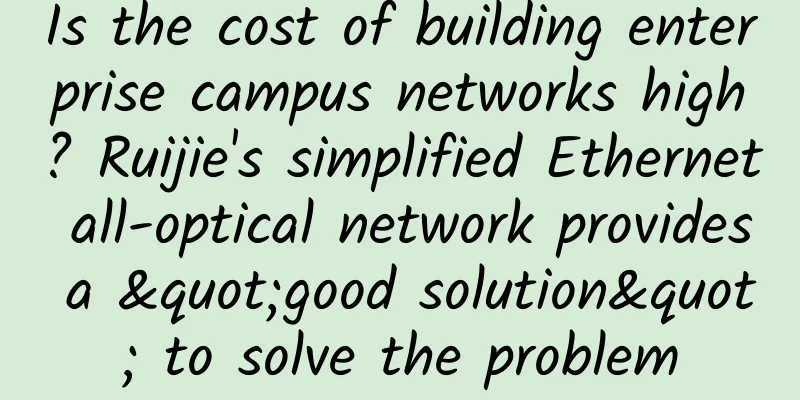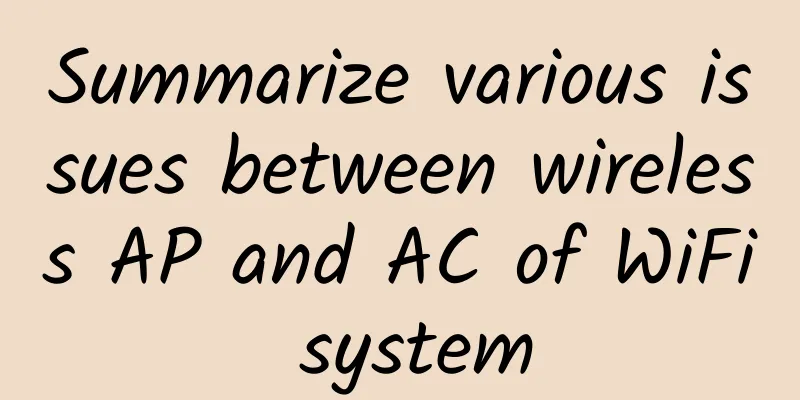5G is entering a period of explosive growth, and it is time for millimeter wave to debut

|
In 2021, the global 5G network construction and development achieved remarkable results. According to data released by GSA in August, more than 175 operators in more than 70 countries and regions have launched 5G commercial services, and another 285 operators are investing in 5G deployment. China's 5G construction pace is at the forefront of the world. The number of 5G base stations in China has exceeded one million, reaching an astonishing 1.159 million, accounting for more than 70% of the world. In other words, 2 out of every 3 5G base stations in the world are located in China.
5G Base Station The continuous improvement of 5G network infrastructure has accelerated the implementation of 5G in consumer and industrial Internet. Especially in vertical industries, there are currently more than 10,000 5G application cases in China, covering many fields such as industrial manufacturing, energy and electricity, ports and mines, logistics and transportation, etc. There is no doubt that 5G has become a powerful tool for the digital transformation of domestic enterprises and an engine for the high-quality development of the digital economy in the entire society. However, as 5G applications are accelerating, we will find that the existing 5G technology has begun to show a "powerless" state in some special industry application scenarios. In terms of speed, capacity, latency and reliability, it cannot 100% meet the needs of the scenario. Why is this? Is it possible that 5G, which people have high hopes for, is still unable to take on the task? Of course not. The main reason why 5G is “not up to the task” is that we are only using “half 5G”. I believe many people know that although the 5G standard is unique, there are two frequency bands. One is called the Sub-6 GHz band, which has a frequency range below 6GHz (to be precise, below 7.125GHz). The other is called the millimeter wave band, which has a frequency range above 24GHz. Comparison of the range of the two frequency bands At present, only the Sub-6 GHz band 5G is commercially available in China, and the millimeter wave band 5G is not commercially available. Therefore, the full potential of 5G has not been fully released. Technical advantages of millimeter waveAlthough both 5G in the Sub-6 GHz band and 5G in the millimeter wave band are 5G, their performance characteristics are very different. According to the knowledge in high school physics textbooks, the higher the frequency of radio electromagnetic waves, the shorter the wavelength, and the worse the diffraction ability. Moreover, the higher the frequency, the greater the penetration loss. Therefore, the coverage ability of 5G in the millimeter wave band is obviously weaker than the former. This is the main reason why millimeter waves were not commercialized in China in the first time, and it is also the reason why people question millimeter waves. In fact, the underlying logic and truth of this issue are quite different from what everyone imagines. In other words, we actually have some wrong prejudices against millimeter waves. First of all, from a technical perspective, we must reach a consensus that - without revolutionary changes in the existing basic communication theory, if we want to further significantly improve the speed and bandwidth of the network, we can only work on the spectrum. Seeking more abundant spectrum resources in higher frequency bands is an inevitable choice for the development of mobile communication technology. This is true for millimeter waves now, and it is also true for terahertz waves that may be used in 6G in the future. Millimeter wave spectrum diagram At present, the maximum bandwidth of the Sub-6 GHz band is 100MHz (in some places abroad, it is even only 10MHz or 20MHz). It is too difficult to achieve a rate of 5Gbps or even 10Gbps. The 5G millimeter wave has a frequency band of 200MHz-800MHz, which makes it much easier to achieve the above goals. Not long ago, in August 2021, Qualcomm and ZTE Corporation jointly achieved the first domestic use of 5G SA dual connection (NR-DC), based on the 200MHz carrier channel in the 26GHz millimeter wave band and the 100MHz bandwidth in the 3.5GHz band, jointly achieving a single-user downlink peak rate of more than 2.43Gbps. The two companies also achieved a single-user downlink peak rate of more than 5 Gbps based on four 200 MHz carrier channels in the 26 GHz millimeter wave band using carrier aggregation technology. In June this year, at the MWC Barcelona exhibition, Qualcomm used the Snapdragon X65 to achieve a peak rate of up to 10.5Gbps based on 8-way aggregation of the n261 millimeter wave band (single carrier bandwidth is 100MHz) and 100MHz bandwidth of the n77 band. This is currently the fastest cellular communication rate in the industry. Single-carrier bandwidths of 100MHz and 200MHz can achieve this effect. In the future, based on single-carrier bandwidths of 400MHz and 800MHz, rates far exceeding 10Gbps will undoubtedly be achieved! In addition to the significant increase in speed, another advantage of millimeter wave is lower latency. Due to the subcarrier spacing, the latency of 5G millimeter wave can be reduced to one-quarter of that of Sub-6GHz. According to test verification, the air interface latency of 5G millimeter wave can be reduced to 1ms, and the round-trip latency can be reduced to 4ms, which is an excellent performance. The third advantage of millimeter wave is its small size. The wavelength of millimeter waves is very short, so its antenna is very short. In this way, the size of millimeter wave equipment can be further reduced and have a higher degree of integration. The difficulty of product design for manufacturers is reduced, which is conducive to promoting the miniaturization of base stations and terminals.
Millimeter wave antenna (the yellow particles are antenna vibrators) More densely packed large-scale antenna arrays and more antenna elements are also extremely beneficial to the use of beamforming. The beams of millimeter-wave antennas can reach farther and have stronger anti-interference capabilities, which helps to make up for the coverage disadvantage. The more oscillators there are, the narrower the beam and the longer the distance. The fourth advantage of millimeter wave is its high-precision positioning capability. The positioning capability of a wireless system is closely related to its wavelength. The shorter the wavelength, the higher the positioning accuracy. Millimeter wave positioning can be accurate to the centimeter level or even lower, which is why many cars are now using millimeter wave radar. After talking about the advantages of millimeter wave, let’s go back and talk about its disadvantages. Any (communication) technology has its own advantages and disadvantages. The disadvantages of millimeter waves are that they have weak penetration and short coverage distance. Earlier, we mentioned that millimeter waves can enhance coverage distance through beamforming, that is, by concentrating the energy of a large number of antennas in a certain direction, thereby enhancing the signal in a specific direction. Today's millimeter waves all use high-gain directional array antennas and multi-beam technology to address mobility challenges. According to practical results, analog beamforming that supports narrow beams can effectively overcome the significant path loss in frequency bands above 24 GHz. High gain directional antenna array In addition to beamforming, millimeter wave multi-beam can also better realize beam switching, beam steering and beam tracking. Beam switching means that the terminal can select a more suitable candidate beam in a continuously changing environment and perform reasonable switching to achieve better signal effects. Beam steering means that the terminal can change the direction of the uplink beam to match the direction of the incident beam from the gNodeB. Beam tracking means that the terminal can distinguish different beams from the gNodeB. The beam can move with the movement of the terminal, thereby achieving strong antenna gain. Millimeter wave's enhanced beam management capabilities can effectively improve signal reliability and achieve stronger signal gain.
Millimeter waves can also use path diversity to address blocking problems through vertical diversity and horizontal diversity. Simulation demonstration of path diversity On the terminal side, terminal antenna diversity can also improve signal reliability, alleviate hand blocking problems, and reduce the impact of random user positions. Terminal diversity simulation demonstration In summary, with the in-depth research on millimeter wave reflection technology and path diversity, the more advanced multi-beam technology has greatly improved the coverage of millimeter waves and achieved non-line-of-sight (NLOS) transmission. In terms of technology, millimeter waves have solved previous bottlenecks and are becoming more and more mature, fully meeting commercial needs. In terms of the industrial chain, 5G millimeter wave is far more mature than people imagine. Last month, Li Fuchang, director of the Wireless Technology Research Center of China Unicom Research Institute, made it clear that "at present, the millimeter wave industry chain capabilities have matured." At the MWC Shanghai exhibition at the beginning of the year, domestic operators also said: "With the support of spectrum, standards and industry, millimeter wave has made positive commercial progress. By 2022, 5G millimeter wave will have large-scale commercial capabilities." Application scenarios of millimeter wavesHaving talked about the technical advantages of millimeter wave, let’s take a look at its specific application scenarios. As we all know, the most important thing in applying technology is to "play to its strengths and avoid its weaknesses." In other words, a technology should be used in scenarios where it can best play its advantages. The advantages of 5G millimeter wave are speed, capacity, and latency. Therefore, it is most suitable for crowded places such as airports, stations, theaters, and stadiums, as well as vertical industry scenarios that are very sensitive to latency, such as industrial manufacturing, remote control, and Internet of Vehicles. In terms of specific application areas, virtual reality, high-speed access, industrial automation, medical health, intelligent transportation, etc. are all areas where 5G millimeter waves can be used. Let’s first look at the consumer Internet scenario. For ordinary individual users, the biggest bandwidth demand comes from videos, and the biggest latency demand comes from games. VR/AR technology (virtual reality/augmented reality) has dual demands for bandwidth and latency. VR/AR technology is developing rapidly now, including the recently very popular metaverse, which is also inextricably linked to them. To achieve a perfect immersive experience and completely eliminate dizziness, VR video resolution must be above 8K (even 16K, 32K), and latency must be within 7ms. There is no doubt that 5G millimeter wave is the most suitable wireless transmission technology. Qualcomm and Ericsson conducted XR tests based on 5G millimeter wave, bringing each user an XR experience of 90 frames per second and 2K×2K resolution, with a latency of less than 20ms and an average downlink throughput of more than 50Mbps. The test results show that deploying only one gNodeB with a system bandwidth of 100MHz can support 5G access for six XR users at the same time. With the support of future 5G features, it is expected to support more than 12 users at the same time. XR Test Another important application scenario of 5G millimeter wave for C-end consumer users is the live broadcast of major sports events. In February 2021, the American football season finale, the Super Bowl, was held at the Raymond James Stadium. With the help of Qualcomm, Verizon, a well-known American operator, used 5G millimeter wave technology to turn the stadium into the one with the fastest Internet speed in the world. During the competition, the 5G millimeter wave network carried a total traffic of more than 4.5TB, and in some scenarios the peak rate reached 3Gbps, which is about 20 times that of 4G LTE. In terms of uplink speed, this Super Bowl is the first major event in the world to use 5G millimeter wave uplink transmission. The millimeter wave frame structure is flexible and can adjust the uplink and downlink frame ratio to achieve higher uplink bandwidth. According to on-site data, even at peak times, 5G millimeter waves are more than 50% faster than 4G LTE. With powerful uplink capabilities, fans can upload photos and videos to share exciting moments of the game. Verizon has also created an app that allows fans to watch seven streams of high-definition live events at the same time, with seven cameras showing the game from different angles. In 2022, the 24th Winter Olympics will be held in Beijing. At that time, there will be access and traffic demands from spectators' mobile phones, as well as backhaul data demands from media broadcasts. In particular, multi-channel 4K high-definition video signals and panoramic camera video signals (for VR viewing) pose a severe challenge to the uplink bandwidth of mobile communication networks. In response to these challenges, China Unicom plans to use 5G millimeter wave technology to actively respond. In May this year, ZTE, China Unicom and Qualcomm conducted a test, using 5G millimeter wave + large uplink frame structure, which can achieve stable backhaul of real-time collected 8K video content, and finally successfully receive and play it back at the receiving end. Let’s take a look at vertical industry application scenarios. The application prospects of 5G millimeter wave in toB are broader, and it can be said that it is like a fish in water. First of all, the VR/AR mentioned above can actually also be used in the toB industry. For example, engineers can use AR to remotely inspect equipment in other places, provide remote guidance to engineers in other places, and remotely inspect and accept goods in other places. During the epidemic, these applications can help companies solve practical problems and significantly reduce costs.
Let’s look at the video backhaul application. Many factory production lines are now equipped with a large number of cameras, including some high-definition cameras for quality inspection. These cameras take a large number of high-definition product pictures to perform defect analysis. For example, COMAC uses this method to analyze metal cracks on product solder joints and sprayed surfaces. After taking photos, they need to be uploaded to the cloud or MEC edge computing platform, which requires an uplink speed of 700-800Mbps. The 5G millimeter wave large uplink frame structure can easily cope with this. There is another scenario that is closely related to 5G millimeter wave technology, that is, AGV unmanned vehicles.
5G millimeter wave supports AGV operation AGV is actually a miniaturized unmanned driving scenario. The positioning, navigation, scheduling and obstacle avoidance of AGV have high requirements on network latency and reliability, as well as high requirements on precise positioning capabilities. The real-time map update of a large number of AGVs also puts forward requirements on network bandwidth. The use of 5G millimeter wave can fully meet the above requirements of AGV application scenarios. In January 2020, Ericsson and Audi successfully tested 5G uRLLC functions and actual industrial automation applications based on 5G mmWave in their factory laboratory in Kista, Sweden. Among them, they jointly built a robotic unit that uses 5G millimeter wave for connection. As shown in the picture above, when the robot arm is making the steering wheel, the laser curtain can protect the open side of the robot unit. If a factory worker reaches in, based on the high reliability of 5G uRLLC, the robot will immediately stop working to prevent the worker from being hurt. This kind of instant response with guaranteed reliability is impossible with traditional Wi-Fi or 4G. The examples above are only some of the application scenarios of 5G millimeter waves. In addition to the field of industrial Internet, remote surgery in smart medical care and unmanned driving in the Internet of Vehicles are also the strengths of 5G millimeter waves. As an advanced technology with many advantages such as high speed, large capacity, low latency, high reliability, and high positioning accuracy, 5G millimeter wave has received widespread attention from all walks of life. ConclusionThe 21st century belongs to data. The huge commercial value contained in data has been recognized by the world. Today, almost all industries are looking for the relationship between themselves and data and participating in the mining of data value. Connectivity technologies represented by 5G and computing technologies represented by cloud computing, big data, and artificial intelligence are both indispensable tools for tapping the value of data. Making full use of 5G, especially 5G in the millimeter wave frequency band, is equivalent to grasping the "golden key" to digital transformation. It can not only achieve a revolutionary leap in productivity, but also enable us to remain invincible in the fierce competition in the future. In short, 5G millimeter wave technology and industry have matured comprehensively. As 5G industry applications gradually enter the deep water zone, we should step up efforts to promote the domestic commercialization of 5G millimeter wave and realize the coordinated development of Sub-6 and millimeter wave. Only in this way can we truly unleash the full potential of 5G and inject the 5G heart into the entire society! |
<<: Several thinking patterns that need to be changed in the 6G era
Recommend
Banwagong: Los Angeles CN2 annual payment starts from $46.5, 1-10Gbps US CN2 GIA/Hong Kong CN2 GIA/Japan CN2 GIA
Bandwagonhost VPS was founded in 2012 and is affi...
Mingjingtai blockchain helps the real economy, and Jileduo's new model is launched today
On November 27, 2018, Mingjingtai, a distributed ...
Four SD-WAN misconceptions
When any technology or service is sold in large q...
Europe lags behind in 5G rollout, study shows
According to an assessment report released by the...
The efficiency of quantum entanglement purification has increased by more than 6,000 times, far exceeding the international level
At present, quantum technology represented by qua...
South Korea's ICT exports hit record high in first half of the year
According to Yonhap News Agency, the Ministry of ...
Apple, Qualcomm, and Intel: 5G
Within 48 hours, Apple, Qualcomm, and Intel, thre...
Wang Xiaochu: Prepare for 5G and avoid making the same mistakes as in the 4G era
Recently, Wang Xiaochu, Chairman and Chief Execut...
The fourth largest operator is applying for a new LOGO and 5G broadcasting and television is expected to be seen within this year
The integration of the national radio and televis...
T-Mobile plans to provide super-capacity 5G network within three years
According to foreign media reports, T-Mobile plan...
LuxVPS: €4.5/month KVM-4GB/30GB/5TB@1Gbps/Germany data center
LuxVPS is a foreign hosting company founded in 20...
Omdia’s view: 400G is ready as a carrier service
The latest report from market research firm Omdia...
Kvmla Japan Tokyo Softbank VPS promotion 20% off, top up 500 yuan and get 100 yuan
Kvmla, a long-established Chinese VPS hosting com...
Cisco ushers in a new era of networking
The recent WannaCry ransomware cyberattack target...
Transition to 5G drives demand for fiber
A new report released by IndexBox: "World – ...









